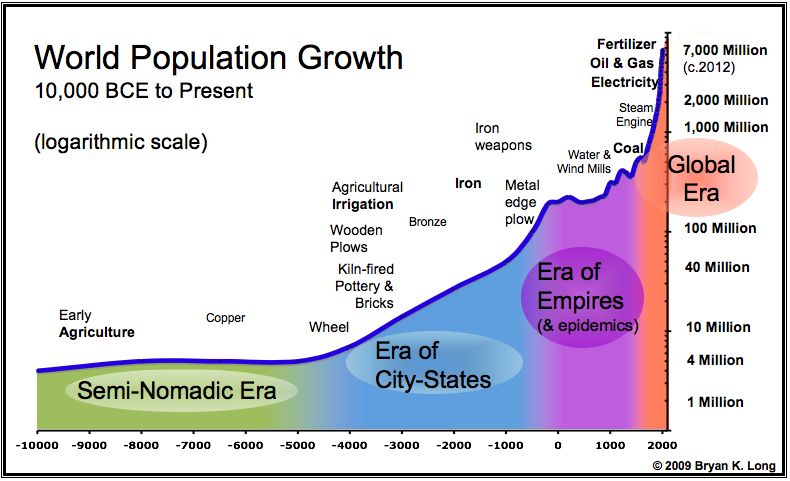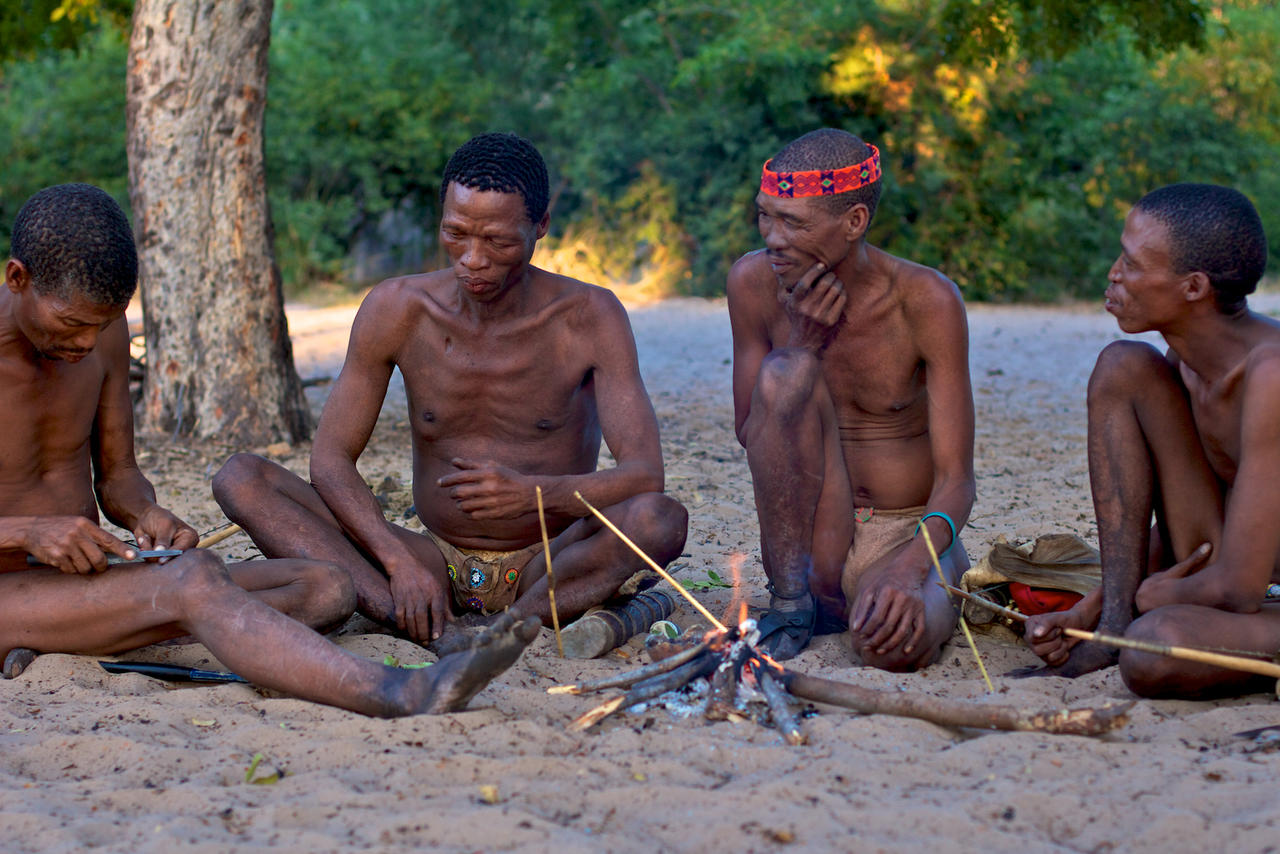Biologists often study the population dynamics of other animal species. Population sizes are described as being controlled by factors such as resource availability and prevalence of predators. Populations fluctuate in size based on the combined effects of these various influencing factors.
The world’s human population, in the last several hundred years, has been increasing exponentially and relatively undeterred. This has contributed to many contemporary problems. There is major strain on natural resources which has resulted in extensive ecological destruction. There is much social and political strife, often by way of the aforementioned environmental pressures.

Image 1: World population growth over the last 12 000 years. Population size is correlated with types of society over the time scale.
However, human populations across the globe and through time have existed in varying types of societies. One major characteristic of a society is its population size. The relationships between population dynamics and society are intricate. Does the size of a population influence the type of society in which it is found? Or conversely, does a type of society influence its population size?
One common question refers to whether human populations can exist in a more “natural” or “balanced” state, more similar to those of other animal species. And if so, what does this mean for the type of society in which such a population would have to exist?
The San peoples of Southern Africa are the last living remnants of a wide group of peoples that pre-existed even the Bantu-speaking nations of Africa, let alone the Europeans. This wide group of peoples were Stone Age hunter-gatherers who inhabited most Africa for thousands of years. The hunter-gatherer way of life which these peoples employed is still in existence today in the remote populations of San peoples.

Image 2: A group of San men in Namibia. Note the arrows (one being prepared) which are used in hunting.
This hunter-gatherer lifestyle encourages a small population size to exist. The nomadic lifestyle is certainly more easily achieved with a smaller group size and, even more importantly, a small population size allows for the ability to “live off of the land” in the gatherer fashion. Conversely, this heavy reliance upon already limited natural resources also acts as a population check, keeping the size of the population fluctuating but small.
Lifestyles such as that of the hunter-gatherer San peoples are easily romanticised. In comparison to overpopulated, stately societies around the world, they appear to conduct a lifestyle much more near a balance with their surroundings. Or at least they appear to have much less of a negative impact upon their environment.
However, many people view the modern way of life in more state-orientated societies as simply better. There are even opinions, similar to those of social Darwinism, that describe a progression over time from more basic nomadic societies to intricate and large state societies. The reality is that small mobile hunter-gatherer groups still exist today, descended from societies that have existed for thousands of years. Is that simple fact perhaps enough proof of a successful, less destructive, way of life? Ultimately, as contemporary state societies face ever-increasing problems from the socio-political and environmental arenas, time will indeed shed more light upon the situation.
Additional sources of information:
The novel Ishmael by Daniel Quinn explores types of societies, their origins, and ultimately compares them in search for a better, more ideal way of life. The book is available from the Vassar College Main Library:
http://vaslib.vassar.edu/search~S1?/aQuinn/aquinn/1%2C150%2C276%2CB/frameset&FF=aquinn+daniel&1%2C%2C3
For more information about the San peoples, their history, lifestyle and archaeology, visit South African History Online:
http://www.sahistory.org.za/people-south-africa/san
Citations:
Renfrew, Colin, and Paul G. Bahn. Archaeology essentials: theories, methods, and practice. 2nd ed. New York, NY: Thames & Hudson, 2010.
South African History Online. “The San.” http://www.sahistory.org.za/people-south-africa/san
Image 1: http://econosystemics.com/wp-content/uploads/2009/05/world-population-chart.jpg
Image 2: https://wetu.com/ImageHandler/1280×1280/24445/Nhoma-Safari-Camp-Tented-Lodge-Resdest-Namibia-Tsumkwe-Bushmenland-BushManLife3.jpg
